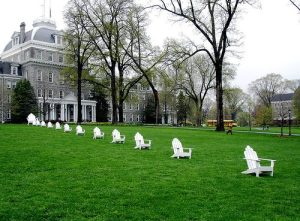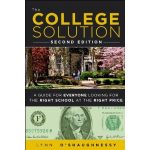Note: I ran this college blog post last year, but it’s equally relevant today…
I got an email this week from a California mother who was happy that her child would be a attending St. Mary’s College of Maryland, a wonderful public liberal arts college, in the fall.
Her husband, however, remained skeptical. He worried that his daughter would be jeopardizing her chances of going to graduate school if she went to an obscure liberal arts school. He thought she’d have a better shot at attending graduate school if she earned her bachelor’s degree from a large state university in California or elsewhere.
Here’s my answer to that: Nonsense.
A Liberal Arts Edge for Future Phd’s
Students who attend liberal arts colleges enjoy many advantages that students at large public institutions often don’t.
At liberal arts colleges there is a much greater chance for undergraduate research. Classes are routinely small. Instead of 200 or 300 in Calculus II, you may have 15 or 20 students. Students enjoy more opportunities to develop bonds with professors because the learning is in small settings and not lecture halls. And 
Okay, you might be wondering, but where are your facts to back up your claims?
To answer the email from the mom, I tracked down a report produced by the National Science Foundation that examined where scientists and engineers, who had earned PhD’s, had obtained their undergraduate degrees. The majority of schools (28) in the top 50 list of PhD-producing schools were liberal arts colleges. The list includes Beloit College, my son’s school.
PhD Feeder Schools
The liberal arts dominance on this PhD list is even more impressive when you consider that just 2% to 3% of students attending four-year higher-ed institutions are enrolled at liberal arts colleges.
When the National Science Foundation examined what schools were producing the most PhD’s per 100 undergraduate degrees granted, only three public institutions made the list – University of California-Berkeley, College of William and Mary and New Mexico Institute of Mining and Technology.
In the NSF list below, I put a red mark next to each of the liberal arts colleges. I included Harvey Mudd which is an engineering/liberal arts college.
More on PhD and Undergrads
I wrote a post earlier this year that shared more statistics on PhD feeder schools. You will find the liberal arts/PhD advantage in other majors too. I’d urge you to check that one out:
The Colleges Where PhD’s Get Their Start
Lynn O’Shaughnessy is the author of the second edition of The College Solution.
Read More:
5 Reasons to Attend a Liberal Arts College
Which is Better: A University or Liberal Arts College?
New York University: Tale of 2 Students
Beware of Wildly Different Grad Rates


One reason why the list of PhD feeder schools contains many liberal arts colleges is that a lot of the majors offered at liberal arts schools aren’t “job ready” at the end of a 4 year bachelor’s degree. In other words, they are in areas where it is expected that the student gets a graduate degree to be employed in those fields. At more technical schools, students often enter the workforce immediately after earning a bachelor’s degree, because employers will hire graduates with specific “skill” education right away, and therefore the statistics are skewed the way that they are.
Hi Lynn,
I think the PhD feeder school list is always an eye-opener. I’ve found another interesting list for people who are worried about going to a school no one has ever heard of, the list of undergraduate institutions for first year Harvard law students.http://www.law.harvard.edu/prospective/jd/apply/undergrads.html. Now I know that there may be only one student from some of the schools but if you told students in Texas that you could go to UTSA of the University of Houston and get into Harvard Law, they probably wouldn’t believe you. And Beloit made the list as well.
Awesome Michelle. Thanks! I was talking to someone in UCLA admission not long ago and she said when she was working at UCLA’s medical school admissions she said there were many, many admitted applicants that came from schools no one had ever heard of. She also said that being an undergrad at UCLA gave you no advantage whatsoever when applying to UCLA’s law and med schools.
Lynn O’Shaughnessy